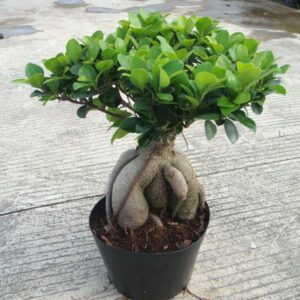Ipomoea batatas, commonly known as sweet potato or sweet potato vine, is a versatile and popular plant species.Ipomoea batatas is a perennial vine that belongs to the morning glory family, Convolvulaceae. It is cultivated for its tuberous roots, which are commonly consumed as a nutritious and tasty vegetable. The plant features heart-shaped to lobed leaves that come in a variety of colors, including green, purple, or variegated combinations.Here’s some information about Ipomoea batatas:
Edible Roots:
The tuberous roots of Ipomoea batatas are the edible part of the plant and are commonly known as sweet potatoes. They are starchy and sweet, with a wide range of culinary uses. Sweet potatoes are rich in fiber, vitamins, and minerals, making them a nutritious addition to meals.
Ornamental Use:
Besides its culinary value, Ipomoea batatas is also grown as an ornamental plant. The vibrant foliage and trailing vines make it an attractive choice for hanging baskets, container gardens, and ground cover in landscaping. The colorful leaves can provide a striking contrast in gardens and add visual interest to various settings.
Cultivars:
There are numerous cultivars of Ipomoea batatas available, offering different leaf colors, shapes, and patterns. Some popular cultivars include ‘Blackie’ with deep purple leaves, ‘Margarita’ with chartreuse green leaves, and ‘Sweet Caroline’ with variegated foliage.
Growing Conditions:
Ipomoea batatas thrives in warm, tropical to subtropical climates. It prefers full sun but can tolerate partial shade. The plant requires well-draining soil and regular watering. It is a fast-growing vine that can quickly cover trellises, fences, or other structures.
Propagation:
Ipomoea batatas can be propagated from both seeds and stem cuttings. Seeds can be sown indoors or directly in the garden after the danger of frost has passed. Stem cuttings can be rooted in moist soil or water until they develop roots, then transferred to a suitable growing medium.
Versatility:
Ipomoea batatas is not only valued for its edible roots but also for its versatility in gardening and landscaping. It can be used as a ground cover, cascading down walls or hanging baskets, or as a vibrant component in mixed container plantings. The trailing vines can be trained to climb trellises or provide shade when grown on pergolas or arbors.
Health Benefits:
In addition to being a delicious vegetable, sweet potatoes offer several health benefits. They are a good source of dietary fiber, vitamins A and C, potassium, and antioxidants. They are known to support digestion, boost immunity, and promote heart health.
Whether grown for its edible roots or as an ornamental plant, Ipomoea batatas is a versatile and attractive species that adds beauty and nutritional value to gardens and landscapes.
Here are some care tips for growing Ipomoea batatas (sweet potato vine):
Lighting:
Sweet potato vines thrive in full sun to partial shade. Ensure they receive at least 6 hours of direct sunlight each day for optimal growth and vibrant foliage. If growing them indoors, place them near a bright window or provide supplemental grow lights.
Temperature:
Sweet potato vines prefer warm temperatures between 70-85°F (21-29°C). They are sensitive to frost and cold temperatures, so it’s important to protect them from freezing conditions. If grown in colder regions, they are often cultivated as annuals or brought indoors during winter.
Watering:
Keep the soil consistently moist but not waterlogged. Water the plants deeply when the top inch of soil feels dry. Avoid overwatering, as it can lead to root rot. During hot and dry periods, you may need to water more frequently to prevent wilting.
Soil:
Sweet potato vines prefer well-draining, loamy soil with a slightly acidic to neutral pH (around 6.0-6.8). If your soil is heavy or clay-like, amend it with organic matter like compost or well-rotted manure to improve drainage and fertility.
Fertilization:
Regular fertilization can help promote healthy growth and vibrant foliage. Use a balanced, water-soluble fertilizer every 4-6 weeks during the growing season. Follow the package instructions for proper dilution and application rates.
Pruning:
Pruning sweet potato vines is optional but can help control their growth and shape. Trim back any overgrown or leggy stems to encourage bushier growth. Pinching off the tips of young plants can promote branching and fuller foliage.
Trellising and Support:
If you want the sweet potato vine to climb or trail along a structure, provide a trellis, arbor, or other supports. Gently guide the vines and secure them to the support structure as they grow.
Pest and Disease Control:
Sweet potato vines are generally resistant to pests and diseases. However, keep an eye out for common garden pests such as aphids or spider mites. If necessary, treat affected plants with insecticidal soap or horticultural oil following the product instructions.
Propagation:
Sweet potato vines can be propagated through stem cuttings or by using the “slips” (young shoots that sprout from the tuberous roots). Stem cuttings should be taken from healthy, mature plants and placed in a container with moist soil or water until they develop roots. Slips can be carefully removed from the tubers and planted in a suitable growing medium.
By following these care tips, you can enjoy the lush and vibrant growth of Ipomoea batatas (sweet potato vine) in your garden or as an attractive indoor plant. Remember to monitor the specific needs of your plants and adjust watering and care practices accordingly.







Reviews
There are no reviews yet.